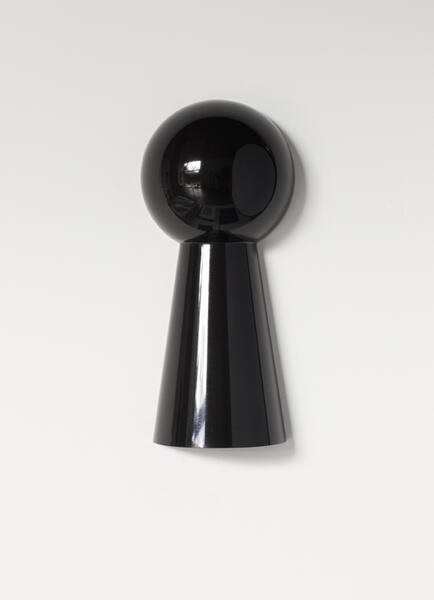Iran do Espírito Santo
Ruth Benzacar, Buenos Aires
The exhibition of Iran do Espírito Santo (Mococa, Sao Paulo, 1963), featured simultaneously with that of Leda Catunda in another level of Ruth Benzacar Gallery, displays (strategically) a series of sculptures and an immense mural painting.

The work of the artist surprises the viewer, who expects the voluptuousness and the colors of the tropic when thinking about Brazilian art. As exquisite as they are minimalist, his sculptures appear as domestic references, but they question appearances and they are the presence of an absence. The perfect and polished forms that resemble objects of everyday use have been deprived of their purpose, and the keyhole is not a hole but a protuberance of black granite that radiates the image of the exhibition space and of the person who approaches it to have a look, The different models of glass lampshades will never show the light through; they are made of solid white marble. The electric light bulb does not give out any light; it emits the reflection of polished metal. The mirror bends, covering part of the reflecting surface, and it unfolds and creates, also using the natural color of the reverse of the looking glass, pieces that refer to constructive art and that partially reflect the image of the room. There are hundreds (thousands?) of vertical lines drawn freehand on the wall with disturbing precision and including almost 60 color gradations between white and black, generating perspectives that alter perception. Espírito Santo creates optical plays and he transforms both the space and the everyday objects in his works subtly and drastically.
-
 (keyhole half). Granite, 17.3 x 6 x 3.9 in. (medio ojo de cerradura).
(keyhole half). Granite, 17.3 x 6 x 3.9 in. (medio ojo de cerradura).
Granito, 44 x 20,5 x 10 cm. Photo/Foto: Eduardo Ortega




